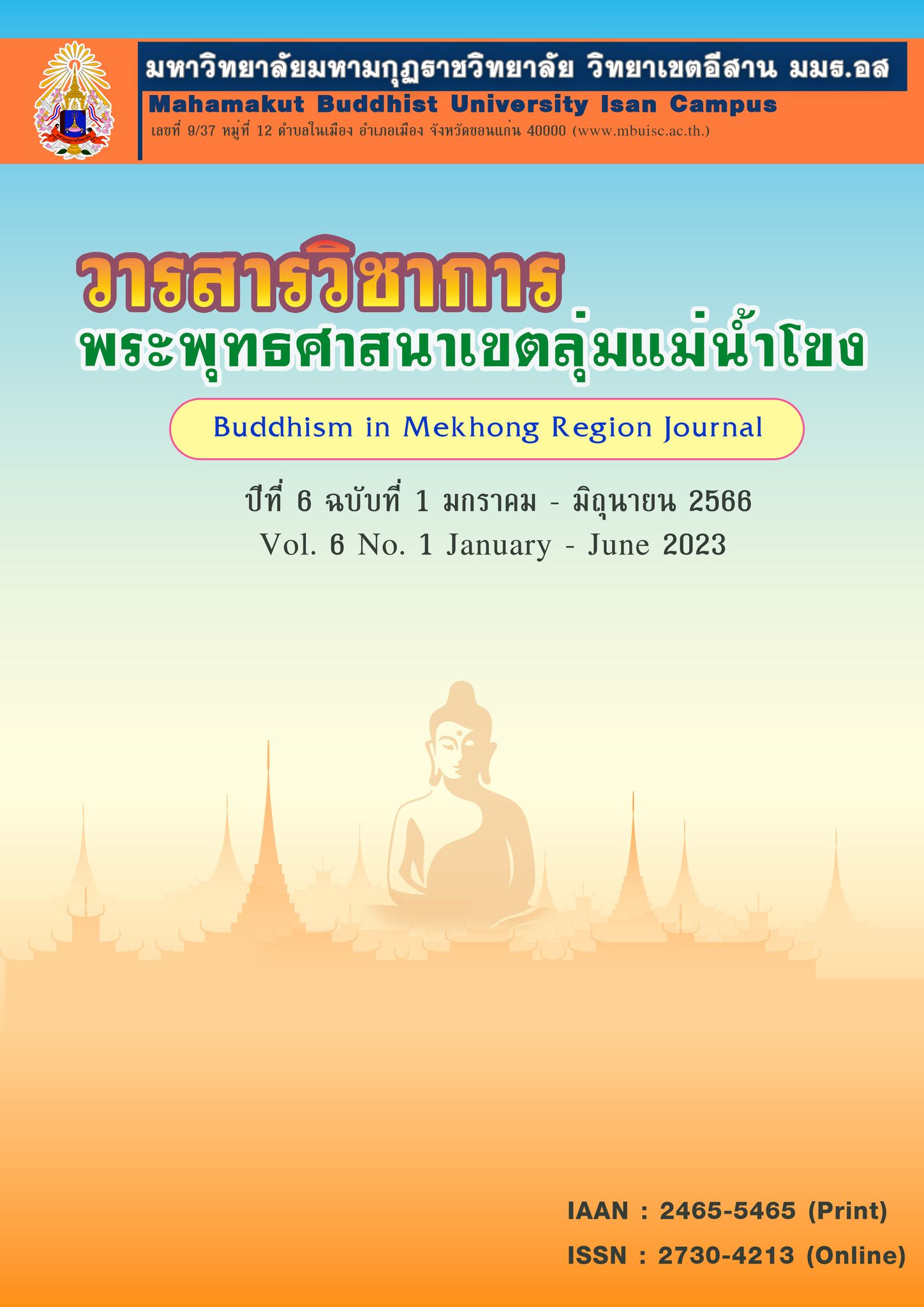THE EFFECTIVENESS OF TEACHING AND LEARNING INNOVATIVE MEDIA
Main Article Content
Abstract
The effectiveness of the application of innovative media in teaching and learning is to achieve the goal of educating. using modern innovations relies on the ability of the teacher Learners have developed to prepare a place, media, and equipment for teaching and learning to be ready and sufficient for all students in the room. Teachers and students interact together in the form of Massive open Online Courses (MOOC) or teaching in the form of Modular Object-oriented Dynamic Learning Environment (Moodle). in the form of Word Excel files, etc. Efficient use of time good teaching and learning depends on the effective use of time in carrying out activities. It consists of having the content of teaching materials. Construction and characteristics of teaching media; quality of teaching media; and the use of teaching materials for effective teaching and learning management for appropriateness. Possibilities can be used to solve problems or to improve teaching and learning. As well as the value of the use in teaching and learning to achieve the goals, use modern innovations Learners can develop themselves according to new innovative media. In the classroom or outside the classroom.
Article Details

This work is licensed under a Creative Commons Attribution-NonCommercial-NoDerivatives 4.0 International License.
- ผลงานที่ส่งตีพิมพ์จะต้องไม่เคยเผยแพร่ในสิ่งตีพิมพ์อื่นใดมาก่อนและต้องไม่อยู่ในระหว่างการพิจารณาของวารสารอื่น การละเมิดลิขสิทธิ์ถือเป็นความรับผิดชอบของผู้ส่งบทความโดยตรง
- ต้นฉบับที่ส่งตีพิมพ์ต้องเป็นภาษาไทยหรือภาษาอังกฤษเท่านั้น
- ต้นฉบับต้องผ่านการกลั่นกรองโดยผู้ทรงคุณวุฒิและได้รับความเห็นชอบจากกองบรรณาธิการ
- ในกรณีที่เป็นบทความแปล ต้องได้รับอนุญาตจากเจ้าของลิขสิทธิ์ โดยการขออนุญาตให้เป็นไปตามหลักจริยธรรมสากล
- ข้อความ เนื้อหา รูปภาพ และตาราง ที่ตีพิมพ์ในวารสาร เป็นความรับผิดชอบของผู้เขียนบทความแต่เพียงผู้เดียว มิใช่ความคิดเห็นและความรับผิดชอบของกองบรรณาธิการวารสาร กองจัดการ และมหาวิทยาลัยมหามกุฏราชวิทยาลัย วิทยาเขตอีสาน
6. ผลงานที่ได้รับการตีพิมพ์ถือเป็นลิขสิทธิ์ของวารสาร
References
กชพรรณ นุ่นสังข์, วิภาวรรณ ชะอุ่ม เพ็ญสุขสันต์, สายฝน เอกวรางกูร. (2562). การพัฒนาการจัดการเรียนการสอนออนไลน์แบบเปิดสำหรับมหาชน (MOOC) ในรายวิชาจิตวิทยาพัฒนาการวัยสูงอายุ และ จิตวิทยาพัฒนาการวัยรุ่น. Walailak Procedia 2019; (8). การประชุมวิชาการระดับชาติ สารสนเทศศาสตร์ วิชาการ ครั้งที่ 1 วันที่ 25-26 มิถุนายน 2562.
กิดานันท์ มลิทอง. (2548). เทคโนโลยีการสื่อสารเพื่อการศึกษา. กรุงเทพมหานคร : อรุณการพิมพ์.
ชโรชีนีย์ ชัยมินทร์. (2562). MOOC: เพื่อการเรียนรู้ตลอดชีวิตในศตวรรษที่ 21. วารสารมนุษยศาสตร์
พิชิต ฤทธิ์จรูญ. (2559). เทคนิคการวิจัยเพื่อพัฒนาการเรียนรู้. กรุงเทพฯ: โรงพิมพ์แห่งจุฬาลงกรณ์มหาวิทยาลัย.Good, C.V., Dictionary of Education. New York : McGraw-hill Book.
มัทนา ปั้นม่วง. (2536). องค์ประกอบที่ส่งผลต่อประสิทธิภาพการสอนของครูประถมศึกษา สังกัดสำนักงาน การประถมศึกษาจังหวัดพิษณุโลก. วิทยานิพนธ์การศึกษามหาบัณฑิต. มหาวิทยาลัย นเรศวร.
ราชบัณฑิตสถาน.(2546: 46-70). พจนานุกรม ฉบับราชบัณฑิตยสถาน พ.ศ. ๒๕๔๒. กรุงเทพฯ: นานมีบุคส์และสังคมศาสตร์มหาวิทยาลัยราชภัฏเชียงใหม่.1(1).
วรวิทย์ นิเทศศิลป์ . (2551). สื่อและนวัตกรรมแห่งการเรียนรู้. ปทุมธานี: โรงพิมพ์ สกายบุ๊กส์.
สุนันทา สุนทรประเสริฐ. (2547). การสร้างสื่อการสอนและนวัตกรรมการเรียนรู้สู่การพัฒนาผู้เรียน. ราชบุรี: ธรรมรักษ์การพิมพ์.
อัจฉรา จันทร์ฉาย.(2553: 128). นวัตกรรม: ความหมาย ประเภท และความสำคัญต่อการเป็นผู้ประกอบการ. ตุลาคม-ธันวาคม. วารสารบริหารธุรกจิ. 33.
Dale, Edgar. (1969). Audio-Visual Methods in Teaching. ๓ Ed. New York: The Dryden Press Holt, Rineheart and Winston. Inc.
Doal, Norman R. (1978). Selecting Competencies outcome for Teacher Education. The Journal of Teacher Education. 26(2).
Gedera, Dillani, S.P. (2014). Students’ experiences of learning in a virtual classroom.
International Journal of Education and Development using Information and Communication Technology (IJEDICT), 10(4), 93-101.
Richard, L. Daft. (1998). Organization theory and design. (6th ed.). Ohio: South-Western College Publishing.
Yukl, Gary A. (1998). Leadership in organizations. (4th ed.). New Jersey: Prentice. Hall.


